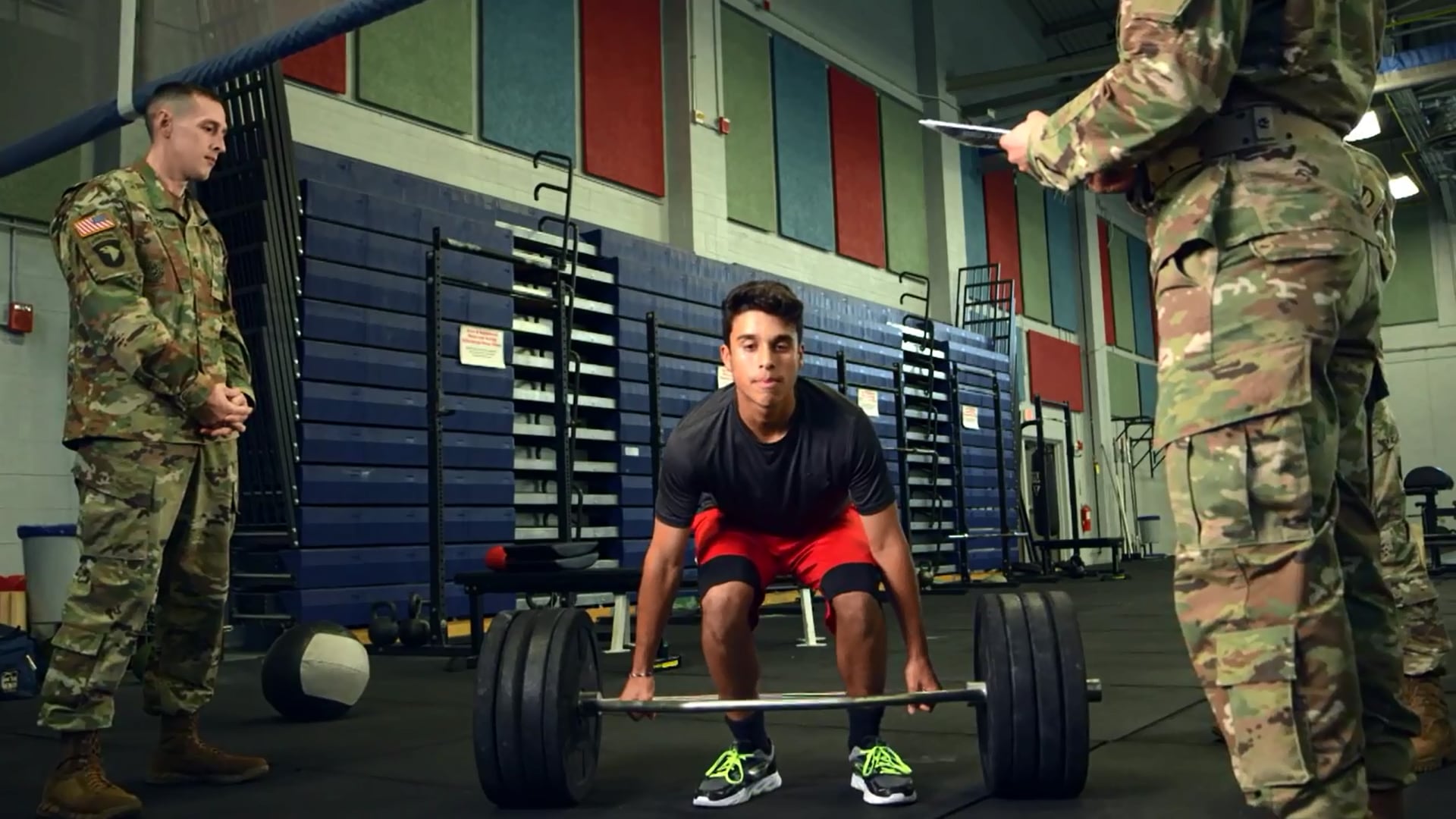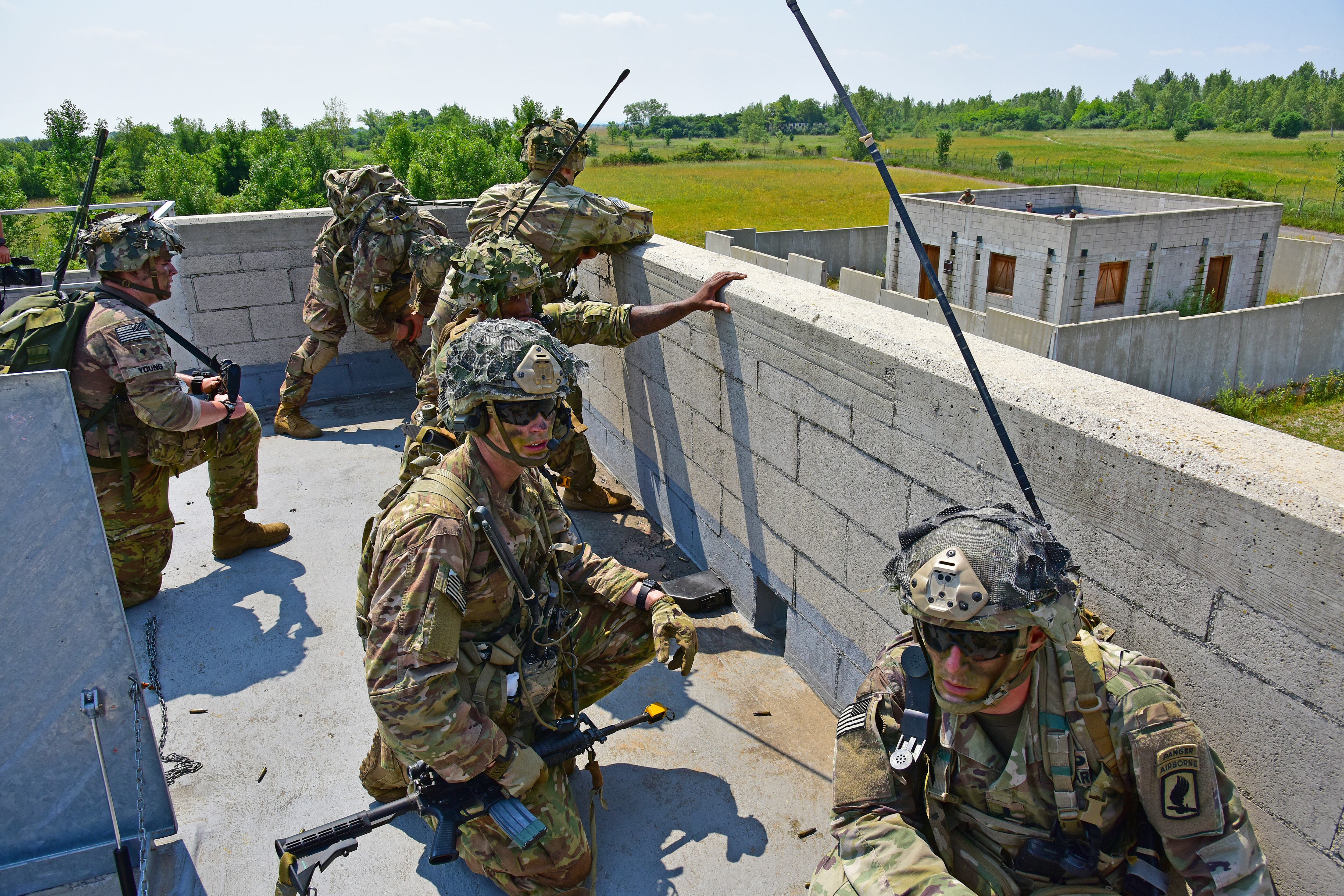Editor’s note: This story has been updated from the original version published Monday to show that the amount of selective retention bonuses for infantry tops out at $41,000, according to Human Resources Command, not $72,000, a number originally provided to Army Times.
The Army was short more than 5,000 junior enlisted infantrymen, with the military occupational specialty manned at roughly 79 percent of its goal earlier this quarter.
In numbers obtained by Army Times, the service’s authorized strength for E-1 through E-4 active-duty infantrymen, coded as 11B, stood at 24,893. But the service only had 19,820 junior enlisted infantrymen, according to official fourth quarter numbers dated July 10.
Indirect fire infantrymen, coded as 11C, were doing a fair bit better, with 2,706 E-1 through E-4 soldiers manning the career field out of the 3,050 troops for which the Army is authorized.
In order to close the gap, the service began offering massive enlistment bonuses topping out at $40,000 for new recruits and up to $41,000 for soldiers who reclassify, said Lt. Col. Mary Ricks, an official with Army Human Resources Command.
The goal is to increase the 11B and 11C MOS strengths to 100 percent by spring of 2020, and the service said it has already made progress to that end.
“There have been instances in the past when we have not met the targeted recruiting goals for various military occupational specialties,” Ricks said. “However, given the current incentives being offered through the recruiting, retention and reclassification bonuses, we expect to meet and maintain our current and future requirements.”
The numbers obtained by Army Times note that the 90-day projection for the 11B MOS was still only expected to hit 83.5 percent of the Army’s authorized manning levels. But Ricks said that shouldn’t be an issue.
“The Army will have enough recruits to fill the available training seats for new infantry soldiers through the end of September," she said. "Those recruits who weren’t selected for training during [fiscal year 2019], due to a lack of classroom seats, will fulfill their training requirements starting in October. Soldiers must be trained before they can be assigned to a unit.”
Army guidance pushes its leaders to maintain 100 percent of authorized strength across all brigade combat teams, a baseline from which the service currently falls short.
But reaching 100 percent manning for the infantry career fields by spring 2020 is very attainable, according to retired Command Sgt. Maj. Thomas R. Brooks, a former Army field recruiter and station commander.
“In fact, they’ll probably exceed it,” he told Army Times.
RELATED

Brooks said that the Army typically recruits from three market segments: 18- to 24-year-old civilians, current soldiers looking to re-enlist and veterans who already separated but could be coaxed back into the service with the right incentives.
The summer is peak recruiting season and when the majority of new recruits enlist. Recruiters typically have plenty of “leads” from recent high school grads that they chase during the summer months, but their outreach starts earlier than that, according to Brooks.
“You want to start working with seniors during the December or January time frame,” he said. “I’ll tell you who they’re working right now: they’re working [high school] grads. The people they’re looking for right now are in the labor force or they’re in college, so that’s where we go to find them.”
“But the 18-24-year-old market is the toughest to penetrate," Brooks added.
In order to tap into an internal recruiting pool, the Army often recruits troops from over-strength jobs or ones that aren’t critically manned. While enlistment bonuses for fresh recruits range from $20,000 to $40,000, selective retention bonuses scale from $1,000 to $41,000 for soldiers who reclassify.

“The exact amount of money a soldier reclassifying will receive is based on rank and the number of years he or she commits to serving in the infantry,” Ricks said.
Bonuses for new recruits are paid out during their term of service. For all soldiers re-enlisting or reclassifying, the bonus is paid out in one lump sum, Ricks said.
When asked whether the current bonuses could go even higher, Ricks said the current rates “are constantly being reassessed based upon Army requirements and funding.”
The Army has been having trouble meeting its recruiting requirements as it strives to grow to a 500,000-strong active-duty force by the end of the next decade. Last year, the service planned to grow the active-duty force to 487,500, but it ended 2019 with 478,000 troops due to recruiting and retention issues.
Because the economy is doing well and the job market is healthy in the civilian world, people simply aren’t turning to the Army as a first choice.
“That’s coupled with all the other factors we talk about all the time: obesity, mental health, challenges with law enforcement,” Acting Army Secretary Ryan McCarthy said last month. “Things of that nature that would require waivers.”
Army officials have been visiting cities all over the country to meet with local civic leaders and help build the relationships necessary to expose Army life to potential recruits. But the service isn’t planning on lowering its standards by issuing waivers in order to meet its numbers.
All five service branches have also been clear that the main driver in attracting recruits and retaining troops is the chance to deploy and perform the job for which troops are trained, as evidenced by the high retention numbers in deployment zones.
But the key difficulty in recruiting from the civilian population appears to still be the booming economy.
“It’s a difficult market because it’s a very healthy job market,” McCarthy said. “This environment is as challenging as we’ve faced — 3.6 percent unemployment. We have no benchmark historically for the all-volunteer force.”
Kyle Rempfer was an editor and reporter who has covered combat operations, criminal cases, foreign military assistance and training accidents. Before entering journalism, Kyle served in U.S. Air Force Special Tactics and deployed in 2014 to Paktika Province, Afghanistan, and Baghdad, Iraq.





